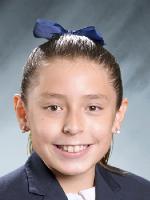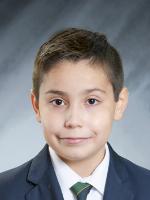

Learning in Lockdown: Building Digital Equity for ESL Learners During the Pandemic |
Participate and share : Poster
Vicente Pérez Avella Sofia De la Mora Villareal María Renata Servín Ortega Amaya Domínguez Harfush Luis Enrique Trueba Pizá Laura De Vizcaya Andrea Alessio Robles
Discover how upper elementary students used design thinking and the multiple intelligences theory to develop quality resources for ESL learners after becoming aware of how different learning was during lockdown. Witness how students merged creativity and digital tools to enhance more equal access to second language learning.
| Audience: | Principals/head teachers, Teacher education/higher ed faculty |
| Skill level: | Beginner |
| Attendee devices: | Devices not needed |
| Topic: | Equity and inclusion |
| Grade level: | PK-12 |
| Subject area: | Language arts, World languages |
| ISTE Standards: | For Students: Innovative Designer
|
| Additional detail: | Student presentation |
The ongoing global pandemic has had major effects in all socio-economic indicators worldwide, while public health, economy and employment have been seriously affected, in Latin America education has suffered major setbacks. In the school year 2019-2020 1.8 million Mexican students under 18 years dropped out of school because they didn’t consider distance learning to be effective or because there were other priorities within their households that set education aside. Mexico’s education ministry developed quick and poorly structured responses that demonstrated the wide gap between public and private schools. While 243,000 students from private institutions kept up with their learning, other 1.5 million from public schools didn’t have the same luck. Therefore, for the school year 2020-2021 already 5.2 million children did not enroll to school at all.
Education in Mexico during the pandemic made clear the system’s backwardness in many areas. For instance, the short or no integration of digital tools into the schools’ programs and the lack of professional training programs for teachers to merge innovation, digital resources and content made it almost impossible for teachers and students to keep up effective learning processes during lockdown for a great amount of the student population. In a country where the sanitary emergency has no deadline it is more evident that cultural diversity is a reality just as equal access to quality education has become an urgent need.
Education is the only tool that can empower children to become global citizens to make significant changes and improvements to any nation. Hence, school leaders must work together to revert the effects that no access to proper education for the majority of young students will have on the country’s recovery, economic, cultural and social stability in the long run. Therefore, when we think about the situation for kids in Mexico, the region were schools were closed for the longest time during the pandemic, it is simple to predict development and better living conditions will take longer to become a reality. Thus, immediate action needs to take place if we want to bridge the gap between students who were able to continue their learning from home and those who had to drop out not because of lack of interest but because of lack of means.
In this sense, after empathizing with the issue and keeping in mind all kids have the right to a good education, students from Highlands International School became problem solvers and took the matter in their own hands. They interviewed students from diverse backgrounds and schools, which widened their perspective of the situation, and provided them with the elements to define and address the problem in a way that could help them envision possibilities to create an innovative solution that will allow children from less favored backgrounds to continue learning a second language even if they are asked to stay at home again. By using ESL, language and technological skills they built upon their own experience to integrate the multiple intelligences theory, technology, creativity and problem-solving skills to create quality resources so that kids their own age could keep up learning from home.
Join this inspiring session to witness the impact this project had on our school community and how it allowed elementary students to develop empathy and understand diversity setting the foundations of a project aimed at empowering young learners from the COVID generation and beyond.
The main purpose and objectives for this presentation are:
To share with the audience the development of a project that addresses the need for equal access to quality education for all children.
To prove how merging Design Thinking and multiple intelligences theory allowed the creation of meaningful resources and tools so that children become problem solvers to help other children thrive.
To share students’ creativity when applying ESL and multiple literacy skills to communicate their ideas and achievements.
To demonstrate there are different ways to use technology on a 1:1 instructional program to develop students ESL and literacy skills.
* Culatta, Richard E. (2021). Digital for GOOD Raising Kids to Thrive in an Online World. Harvard Business Review Press,.
* Robinson, K., & Aronica, L. (2016). Creative schools: Revolutionizing education from the ground up.
* Spencer, J., & Juliani, A. J. (2017). Empower: What happens when students own their learning.
* Wagner, T. (2015). Creating Innovators: The Making of Young People Who Will Change the World (Reprint ed.) Scribner.






Laura believes education is the tool to empower future generations towards a better world. She has taught ESL disciplines, world, art and Mexican history which are her passion. Laura's background on International Relations and Central European History built the foundations for her to acknowledge the need to educate critical thinkers and problem solvers to address current world issues. Her qualifications provide her with the credentials to merge both her passions: ESL and World History. Through research projects and curricular approaches she guides students and teachers to turn contemporary situations into meaningful learning experiences. Has been an ISTE presenter in 2019 and 2020.